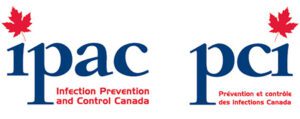Mold in your furnace system
Mold in your furnace System
The CBC news article has come out with an interesting story about the potential dangers associated with mold in your furnace system, such as heat pumps and mold, (you can read the article here http://www.cbc.ca/amp/1.4559478)
These days, with energy savings on everyone’s mind, a heat pump makes a lot of sense, (a heat pump is similar to a furnace as it is a source of heating used in homes). Where it is different is that a heat pump is an electrical device that extracts heat from one place and transfers it to another. The heat pump is not a new technology; it has been used in Canada and around the world for decades. Refrigerators and air conditioners are both common examples of this technology. It is a remarkably efficient way to recycle heat that normally would have been sent up the chimney and lost.
Heat pumps are very good at transferring heat by circulating a substance called a refrigerant through a cycle of evaporation and condensation. A compressor pumps the refrigerant between two heat exchanger coils. In one coil, the refrigerant is evaporated at low pressure and absorbs heat from its surroundings. The refrigerant is then compressed en route to the other coil, where it condenses at high pressure. At this point, it releases the heat it absorbed earlier in the cycle.
The heat pump cycle is fully reversible, and heat pumps can provide year-round climate control for your home – heating in winter and cooling and dehumidifying in summer. Since the ground and air outside always contain some heat, a heat pump can supply heat to a house even on cold winter days. In fact, air at –18°C contains about 85 percent of the heat it contained at 21°C.
Few people realise the potential for mold to grow in their furnace systems
The article goes on to state in depth that few people realise that the potential for mold build-up in these systems is significant and each system needs regular maintenance and regular cleaning, otherwise your heat pump could be the source of mold that will be distributed throughout your home during every heating cycle.
The article goes on to quote Lorna Newcombe of North Bedeque, P.E.I. Newcombe has a five-year-old heat pump, which she loves. Last fall, both she and her four-year-old started having cold symptoms including runny noses, constant coughs and sore and aching muscles.
“Myself and my son were both put on antibiotics and puffers,” she said, adding they’d feel better for a while but when they stopped the antibiotics and puffers they would feel worse again.
In December, her husband took a week’s vacation, spending more time than usual in their home. When he, too, developed similar symptoms, they decided to investigate whether something in their house was responsible.
She has become convinced that her heat pump is responsible for the issue of mold in her home and is what is causing her sickness.
Recently, they decided to have the filters in their heat pump changed but when Newcombe called the owner of the company that installed it, he recommended a deep cleaning.
“I was skeptical because I’ve been cleaning it monthly on a regular basis,” she said.
But he assured her it was worth it and she’d be happy with the result, so she agreed. “When he started spraying it at first it was kind of grey and then as he started going farther I was floored that anything in my house was that dirty,” she said. She said there was black mold inside.
As soon as soon as he started [to open it up], I was like, ‘This is definitely not how I clean it. It’s much more in depth and gets to the parts where you can’t physically get as the owner of one of these machines,”‘ she said.
Newcombe said within two days of the professional cleaning, the whole family felt better. They went back to the doctor and told her about the heat pump.
“She put us on the proper antibiotics and we have been, knock on wood, feeling great since,” she said.
Heat pumps a breeding ground for mold
At Maple Leaf Mold, we know that having mold in your furnace is not uncommon.
We’ve run into many customers who have all the common symptoms of mold exposure. Some have upper respiratory illnesses and many have asthma and are on puffer or ventilators. Now, not all cases are mold related however many are. Many experience relief as what they think are common cold symptoms are really an allergic reaction to dead mold spores or a reaction to live spores.
We also believe that heat pumps tramp both organic material and moisture, two of the main ingredients needed by mold to grow.
You have the moisture, you have the heat, the warmth, and you have the darkness so it doesn’t matter — if you have that anywhere, you’re going to get mold. And what we discovered if you have them cleaned on a regular basis, it cuts down on the mold.
Deep cleaning should be part of a regular maintenance program in your home
Check your heat pump warranty to see if the potential for mold buildup occurs. There are only a few that will mention the possibility of mold growth unfortunately.
Remember, by regularly cleaning your heat pump not only are you addressing a potential mold issue, you are insuring your pump is operating at peak efficiency. The dirtier your heat pump the hard it has to work and the more money you’ll spend heating your home.
When should I start a Maintenance Program?
You should start a regular maintenance program right away.
The presence of mold in an HVAC / heat pump system is a common complaint. Mold is a sneaky little bugger. It can grow and proliferate and make building occupants sick without ever being seen and the fastest way to spread mold through a building is through a forced-air HVAC system or heat pump system.
The reason this complaint is so common is that mold is always present in your buildings and your HVAC system to the extent that it is present in your building’s environment. There will be more mold in humid weather and less in dry weather. You will never get rid of it completely, but you can control it. All it needs to grow is moisture and food. Take those away and the mold goes away.
According to Health Canada, you should routinely inspect your HVAC systems, not just for mold, but for moisture. Look at drain and condensate pans to make sure they are draining properly. If they are plugged, the moisture that accumulates will become a mold factory. Also make sure that all HVAC ducts and system components such as air handlers, blowers, plenums and the like are free of any moisture.
If, despite regularly inspecting your system, you are still getting complaints about it (mold starts to grow in as little as 48 hours), here are some tips you can share with your HVAC contractor for cleaning it up:
1.) Turn off your HVAC system.
2.) Call in a certified IICRC firm like Maple Leaf Mold and replace anything porous, such as filters or insulation that has become wet. Maple Leaf Mold will dispose of the waste properly using at 6-mil plastic bags, (find out why hiring a IICRC firm is important at https://mapleleafmold.ca/iicrc-certified-company/).
3.) When containment has been setup. We will use a HEPA vacuum system to clean out any standing water.
4.) After this phase we will apply a biotic disinfectant and an encapsulant designed to kill and lock in mold. We will address all non-porous surfaces (Duct work, coils, plenums, pans, etc) of mold, mildew and other dirt.
5.) As an added measure, we will isolate each section of ductwork and clean with further disinfectants and encapsulants so the spores we stir up during cleaning won’t spread to other parts of the system or the building.
6.) We will apply a mold and mildew inhibitor to all components of the HVAC systems. Again, this will be EPA registered and specifically labelled for use in HVAC systems to limit risks associated with using the wrong chemicals and cleaners in HVAC systems.
7.) As a final step, we will HEPA vacuum out anything that we cleaned up.

Maple Leaf Mold Inc. is a certified mold / asbestos removal and biological disinfection / air analysis company located in Toronto that uses certified IICRC technicians for all testing and remediation projects.
We are a professionally licensed firm experienced in testing, verifying and removing Mold / Asbestos / Lead and other environmental contaminants as well as providing disinfection services to control and kill biological contaminants.
Call 416-254-7256 to talk with us about your issue anytime.



